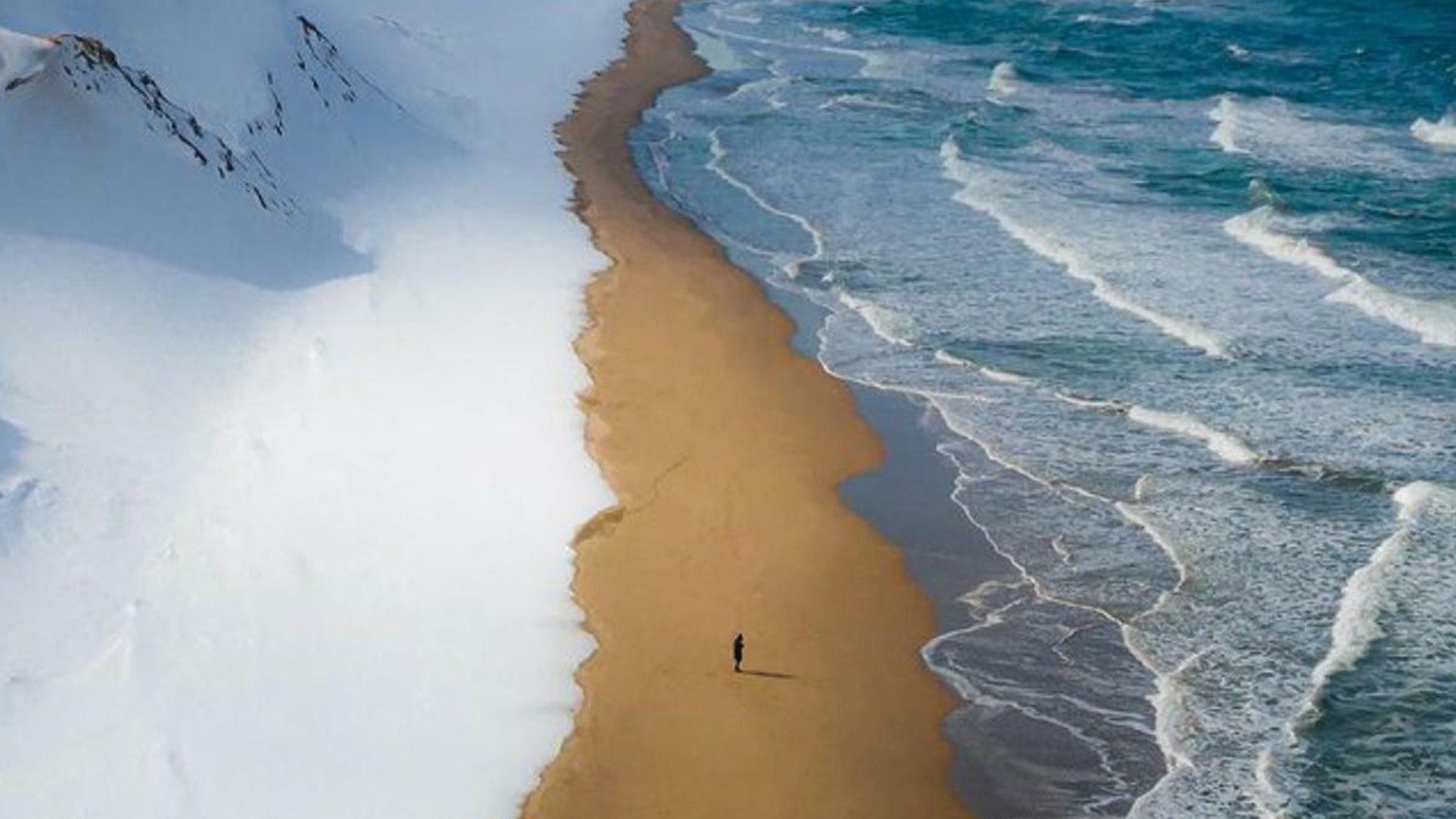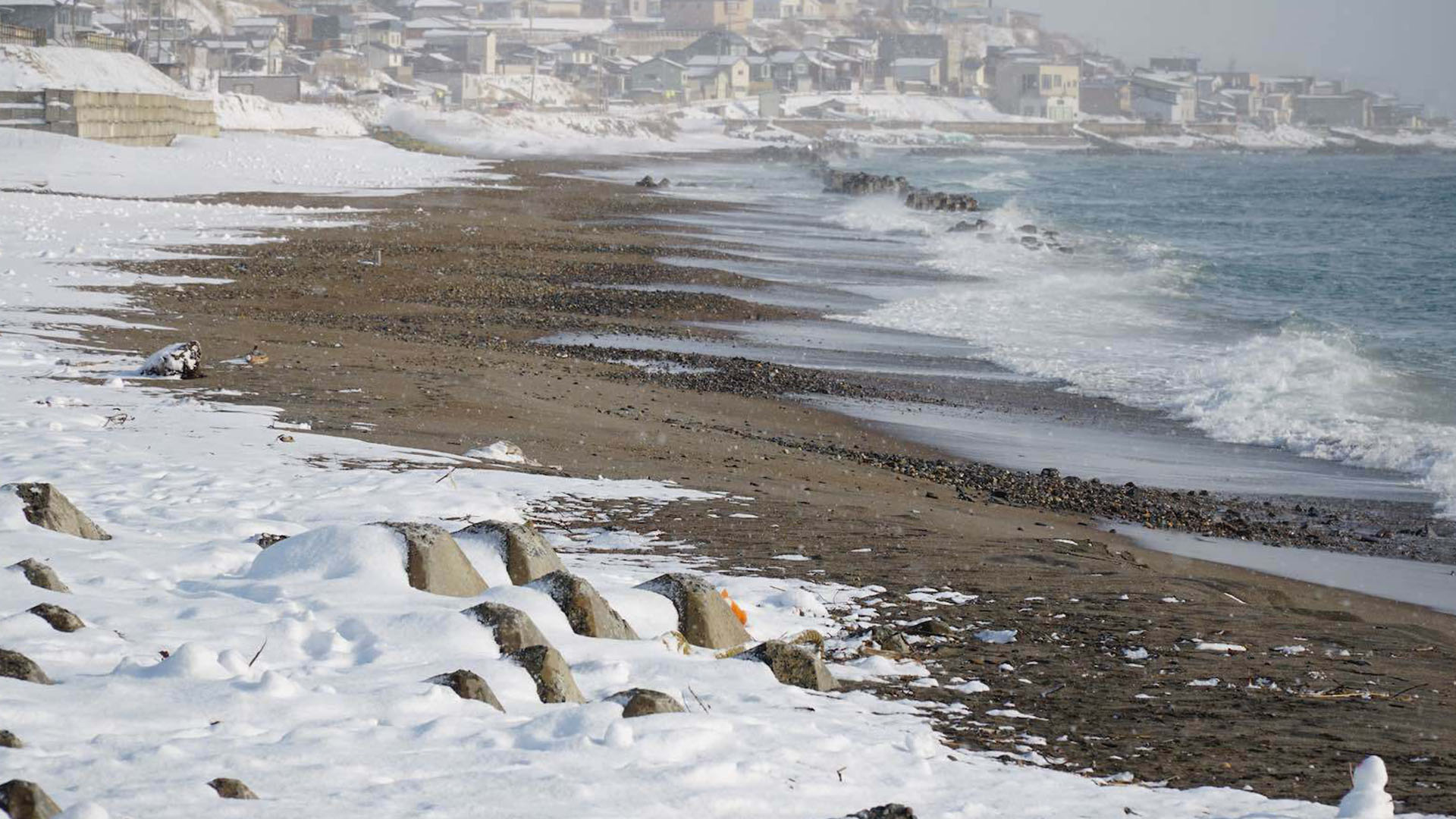A rare phenomenon, this island in Japan contains a unique beach that brings together snow and sand.

This beach is located in San’in Kaigan Geopark, which was declared a Japanese Geopark in 2008 and a UNESCO Global Geopark in 2010. Residing in the west of Japan on Hokkaido Island, the beach stretches from the eastern Kyogamisaki Cape, Kyoto to the western Hakuto Kaigan Coast, Tottori.
The geopark contains an immense diversity of geological sites that are related to the formation of the Sea of Japan. There are also distinct geological features such as sand bars, sand dunes, volcanoes, valleys, pine forests, and ria-type coasts.
The frozen features are delivered to the beach due to the punishing winds that blow drift ice, frozen chunks of freshwater, from the far-off Amur River to the beach at certain times of the year. The snow and ice arrive at the beach primarily between late January and early February, overtaking the beach and sea with a series of mini-bergs.
The phenomenon can be admired from the shore or from an icebreaker, with cruises departing from Monbetsu, Abashiri, and Rausu. For the more adventurous traveler, however, you can don a dry suit and join a guided walk on the ice itself from Shiretoko. A guided ice walk is also an excellent opportunity to spot some of the area’s local wildlife, including white-tailed eagles and sea eagles who flock to the frozen landscape to hunt for fish.
Due to the diversity of the area, the geopark is also home to rare plants including Ranunculus nipponicus, Pseudolysimachion ornatum, and Ciconia boyciana. The island of Hokkaido has countless species of marine and avian creatures, while the mountains house some of the largest mammals in the country, including Ezo silka deer, Ussuri brown bears, and Ezo red foxes.
Winter is also a prime time to spot seals, sea eagles, and Steller sea lions, the latter of which will congregate on the Hokkaido shores after being pushed south from the Kuril Islands by drift ice. Regardless of the season, visitors may also be able to spot the rare and endangered Blakiston’s fish owl, the largest living species of owl.

Visitors to the area can also explore the Shiretoko Peninsula, which is both a national park and a UNESCO World Heritage Site. The Shiretoko National Park Nature Center offers snowshoe rentals for hikers who want to tackle the Furepe Waterfall Trail, which takes hikers through a forest before opening up into a meadow beneath Mount Tenchosan, Mount Rausu, and Mount Io. The trail ends with a cliffside view overlooking Furepe Waterfall, which is also beautiful in the winter when the water transforms into frozen tendrils of blueish ice.
The island of Hokkaido is also excellent for birdwatching, especially in the Notsuke Peninsula. One of the most iconic species on the island is the red-crowned crane. Once feared to have gone extinct, the red-crowned crane’s local population has now rebounded to over 1,000 and can be spotted in the wetlands of Kushiro Shitsugen National Park. Including fascinating wildlife, the wide marsh contains stunning views of the twin volcanoes Mount Meakan and Mount Oakan.







